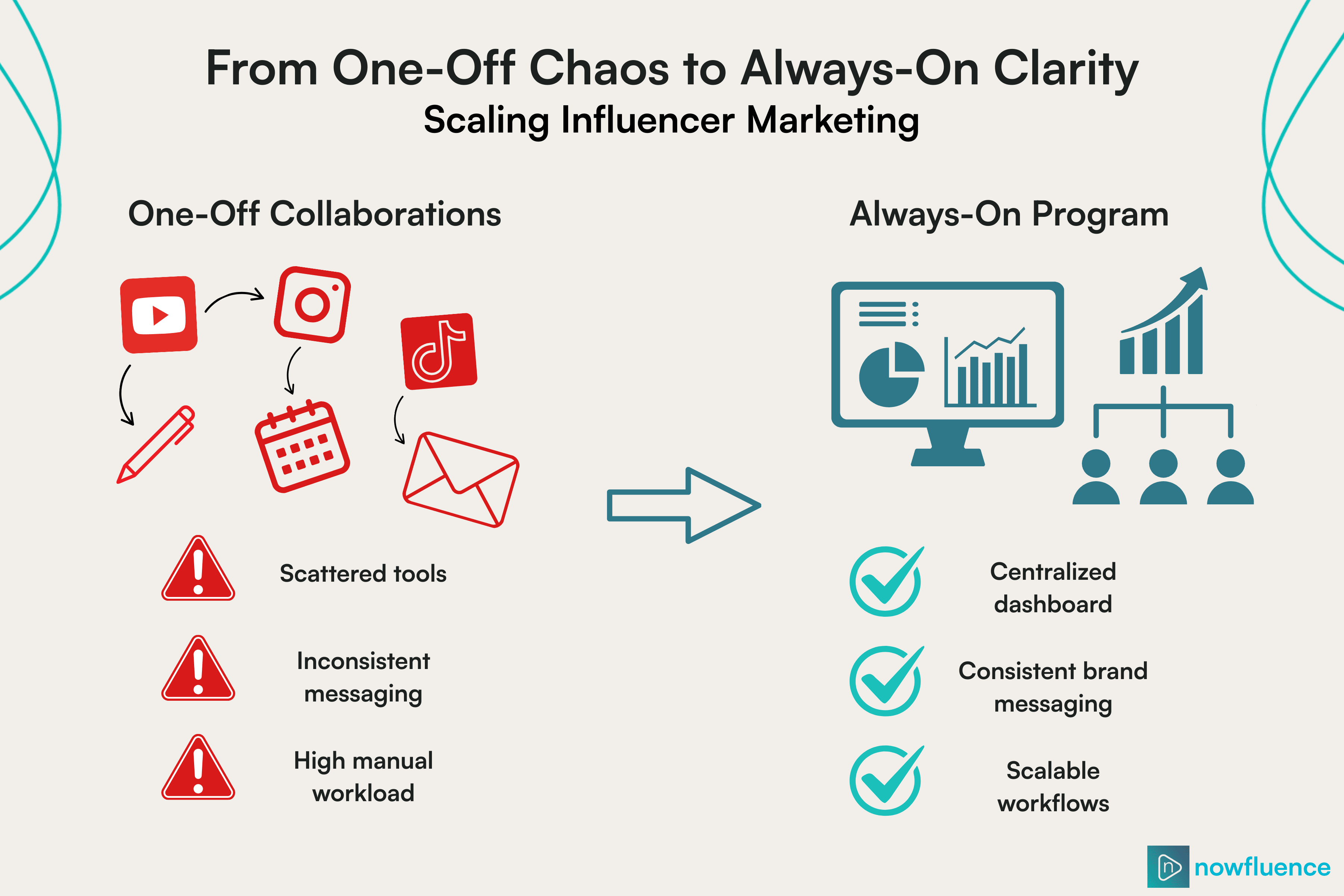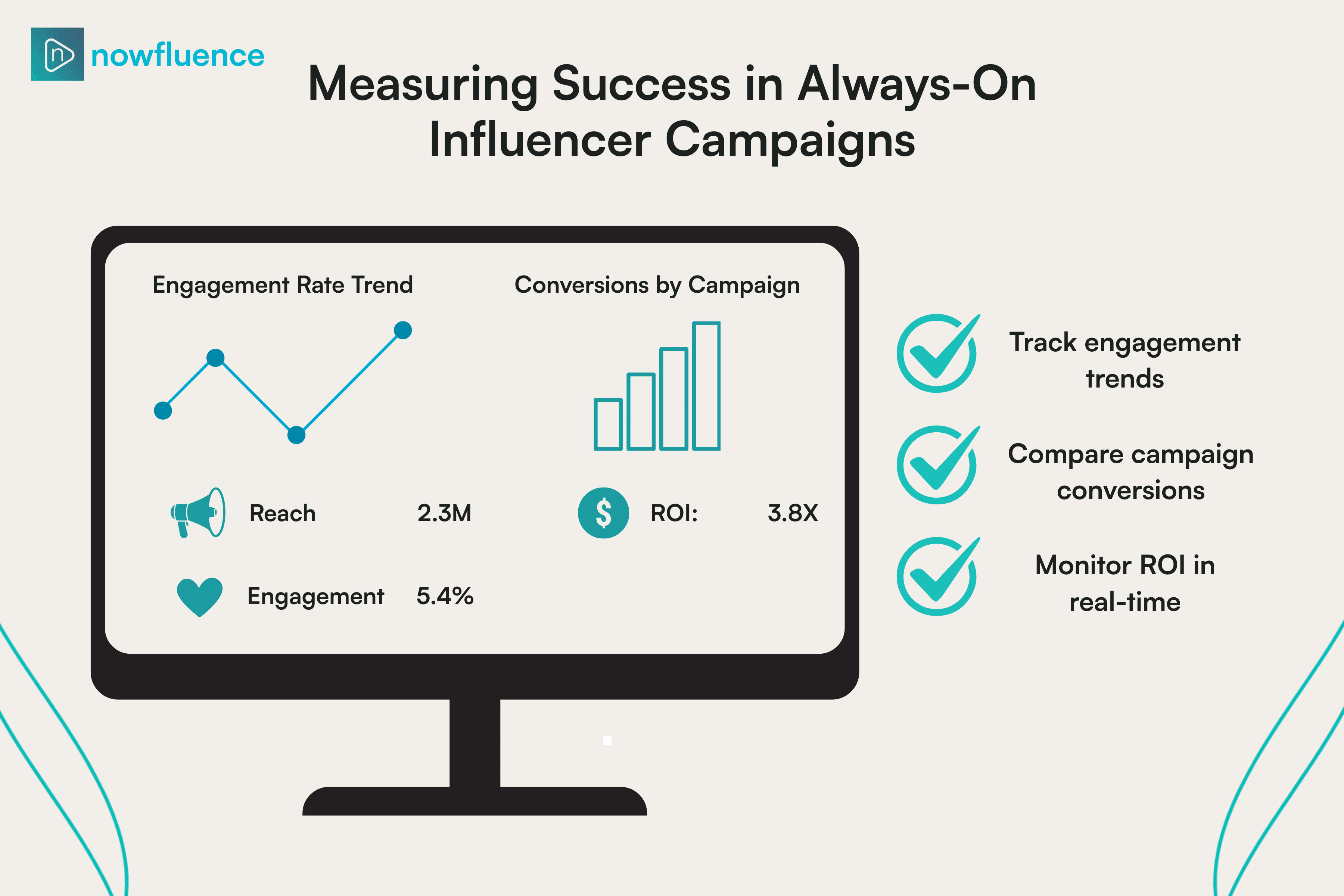Scaling Influencer Marketing: From One-Off Collaborations to Always-On Campaigns
Learn how to scale influencer marketing from one-off posts to always-on campaigns with smarter influencer program management.
August 18, 2025
In the early days of influencer marketing, most brands relied on one-off collaborations: a single post, a product mention, or a quick shoutout. While these tactics can generate short-term visibility, they often fail to deliver consistent growth or measurable ROI.
Today, leading brands are shifting toward always-on influencer campaigns. These are long-term, scalable programs that treat influencers as ongoing partners rather than one-time promoters. This evolution requires not just more influencers, but smarter influencer program management to ensure that every campaign is sustainable, trackable, and aligned with brand goals.
So how can brands make the leap from isolated collaborations to an always-on influencer strategy? Let’s break it down.
Why One-Off Collaborations Fall Short
One-off campaigns may seem convenient, but they often present challenges:
- Limited impact: A single post rarely influences long-term consumer behavior.
- Inconsistent messaging: Each influencer may communicate differently, without building a cohesive narrative.
- Operational inefficiency: Brands spend the same amount of time chasing briefs, approvals, and payments for a single post as they do for an extended partnership.
Scaling influencer marketing means moving beyond this fragmented approach into structured, repeatable programs.
What Are Always-On Influencer Campaigns?
Always-on influencer campaigns are continuous partnerships where influencers become long-term ambassadors of the brand. Instead of one sponsored post, influencers create recurring content that strengthens brand affinity and builds trust with their audiences over time.
Key characteristics include:
- Consistency: Regular content that keeps the brand top of mind.
- Authenticity: Influencers integrate the brand naturally into their ongoing content.
- Scalability: Campaigns can be expanded across multiple influencers, markets, or product lines without starting from scratch each time.
Strategies to Scale Influencer Marketing Successfully
1. Build a Centralized Influencer Program
Instead of running isolated campaigns, create a structured influencer program management system. Centralization helps track performance, streamline communication, and maintain consistency across influencers.

2. Automate the Repetitive Work
Scaling influencer marketing doesn’t mean scaling headaches. Automating reminders, approvals, and payments ensures campaigns run smoothly without overwhelming your team. This frees marketers to focus on strategy and creative optimization rather than manual follow-ups.
3. Invest in Long-Term Partnerships
Treat influencers as partners, not vendors. By extending contracts and creating multi-month or year-long collaborations, brands can:
- Ensure consistent messaging.
- Negotiate better rates.
- Build stronger, more authentic brand-influencer relationships.
4. Measure and Optimize Continuously
Always-on campaigns generate continuous data, which is invaluable for optimization. Track KPIs such as engagement, conversions, and cost-per-result, and refine your strategy based on real-time insights.

The Role of Technology in Scaling Influencer Marketing
Transitioning to always-on campaigns is only possible with the right technology. Managing dozens or even hundreds of influencers requires centralized tools for communication, approvals, and payments. That’s where platforms like nowfluence come in.
With nowfluence, brands can:
- Automate repetitive campaign tasks.
- Track influencer deliverables in real time.
- Manage secure payments via Stripe escrow.
- Build both curated and custom influencer networks inside one platform.
The result: scalable, efficient influencer program management that transforms influencer marketing from a tactical experiment into a strategic growth engine.
Conclusion
Scaling influencer marketing requires moving beyond one-off collaborations into always-on influencer campaigns. By centralizing program management, automating operations, and investing in long-term partnerships, brands can unlock consistent growth, stronger influencer relationships, and higher ROI.
For brands serious about scaling their influencer efforts, the message is clear: it’s time to stop thinking campaign by campaign and start building influencer programs that never switch off.
Want to discuss insights from this study? Reach out to our research team.